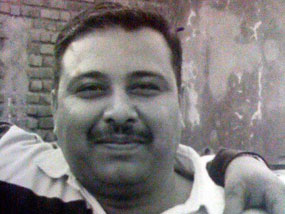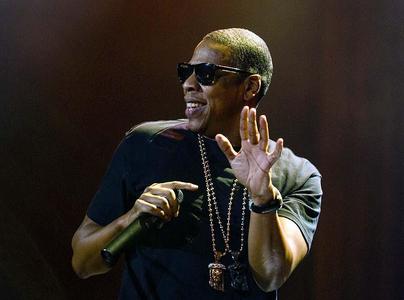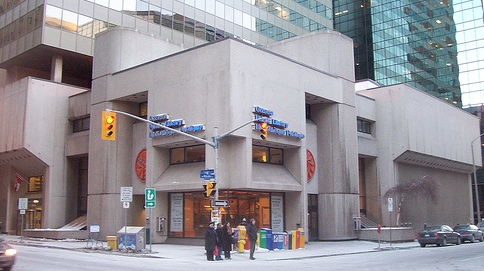Newcomers to Canada benefit from the Library Settlement Partnership at Ottawa Public Library
Ottawa Public Library (OPL) staff, along with partners from Citizenship and Immigration Canada and various settlement agencies, celebrated the Library Settlement Partnerships (LSP) program, a service now available at the OPL that will help newcomers to Ottawa more successfully settle and integrate into their new home. Made possible through a three-way partnership between Citizenship and Immigration Canada, the settlement sector and public libraries, the Library Settlement Partnerships program provide information referral, and other services for newcomers in ten branches of the Ottawa Public Library. The program has been rolled out in 11 communities in Ontario and is funded by Citizenship and Immigration Canada.
“Our government is helping make settlement services more accessible to immigrants,” said Minister of Citizenship, Immigration and Multiculturalism Jason Kenney. “Through this program, newcomers living in the area can access information on housing, transportation and employment opportunities in their neighbourhood library. Improving their access to settlement services will not only ease their transition to life in Canada, but also strengthen the community as a whole.”
“We are enormously proud to be able to provide newcomers with a program that will make their move to a new country a little bit easier. By offering the LSP program in our branches, newcomers to Ottawa can make a smoother transition to their new home,” said Barbara Clubb, city librarian. “The library already offers many services to newcomers of all ages. These range from story times in Mandarin to preparing for the citizenship test in Arabic. The Library Settlement Partnerships program makes a wonderful complement to the already existing services.”
The celebration of the Library Settlement Partnerships program, held at the Main Branch, coincided with the official unveiling of the branch’s recently renovated Newcomer Services space. The space provides the newcomer information officer a dedicated area in which to meet with clients and develop programs to help newcomers settle into the community. The funding to construct the Newcomer Services space was provided by the Friends of the Ottawa Public Library Association (FOPLA).
LSP partners include Citizenship & Immigration Canada, the Ottawa Public Library, the Ottawa Community Immigrant Services Organization, the Lebanese and Arab Social Services Agency, the Somali Centre for Family Services, the Ottawa Chinese Community Services Centre and Conseil Économique & Social d’Ottawa-Carleton.
For more information about the many services offered to newcomers at OPL, please visit the OPL website at http://www.BiblioOttawaLibrary.ca or call Info Service at 613-580-2940.
Take our FREE Online Assessment Today!
Socialize with Abrams & Krochak
Indian police uncover fake Canadian visa scam

Take our FREE Online Assessment Today!
Socialize with Abrams & Krochak
Real estate fees could be slashed

Did you know?
On yourhome.ca you can find listings of plumbers in your area.
Click now to search
Canadians in the housing market will pay less in realty commissions and fees if the federal Competition Bureau has its way.
In a landmark investigation, the bureau has concluded the Canadian Real Estate Association has anti-competitive rules and must change its ways, according to documents obtained by the Star.
Details of a settlement have yet to be decided, but the bureau’s findings are expected to have a profound impact on the real estate industry – by permitting more innovative discount brokers into the market while allowing sellers to list their properties less expensively on the Multiple Listing Service.
With a membership of more than 96,000, Ottawa-based CREA is the largest real estate organization in Canada and represents the majority of the nation’s realtors.
“The Bureau is concerned that CREA’s rules have restricted consumer choice and limited the scope of alternative business models,” says an internal memo by CREA president Dale Ripplinger. “Unfortunately, the Bureau seems to believe that CREA’s rules … create restrictions and barriers.”
The bureau launched its investigation in 2007. Consumers have complained in the past about high realty fees and the need for more affordable services. The vendor of an average-priced $400,000 home in Toronto can pay a commission of as much as 5 per cent, or $20,000.
“This is absolute, total vindication,” says Lawrence Dale, an owner of now-defunct Realtysellers, a Toronto-based discount broker that closed in 2006. “Once they’ve reached their settlement it means that the average guy on the street will be able to choose their real estate services and pay less for them.”
CREA executives met with the bureau on Oct. 23 to hear the long-anticipated results, according to the letter. “At that meeting the Bureau set out the conclusions of their inquiry and their proposed remedy,” says Ripplinger. “The Bureau’s position is that if CREA does not remove these restrictions, the Commissioner of Competiton will initiate an application before the Competition Tribunal.”
Ripplinger says CREA decided not to go before the tribunal, which can administer penalties, but is pursuing a settlement.
According to Ripplinger, CREA rules the bureau wants changed include those that say the listing realtor must act as the agent of the seller and receive and present all offers to the seller, and property information cannot be posted on the Multiple Listing Service without an agent representing the seller.
Changes to these rules would mean offers could be sent directly to the seller without the involvement of the listing agent. Consumers could likely have their listings posted on the MLS for a small fee.
Dale and partner Stephen Moranis claim they were forced to shut down their company because of rules implemented in 2007 by the realtor’s association. Realtysellers offered services such as allowing consumers to post listings for a few hundred dollars on the MLS website, where more than 90 per cent of all home sales are made. The company is suing CREA and the Toronto Real Estate Board.
CREA owns the rights to the MLS.
In a separate lawsuit against TREB, Fraser Beach, another Toronto realtor, alleges the organization terminated his MLS access because he launched a discount brokerage service. A decision by Ontario Superior Court of Ontario Justice David Brown is expected soon.
TREB has argued it didn’t block his access to the MLS for competitive reasons, but simply because he did not follow membership rules.
Both CREA and TREB have denied all allegations. A Toronto Real Estate Board spokesperson says the board does not comment on ongoing legal matters. Officials of the Competition Bureau were not available for comment Sunday.
Although the real estate association has agreed to reach a settlement, Ripplinger stressed “CREA does not agree with the Bureau’s findings and conclusions, either as a matter of fact or as a matter of law.” The association has called an emergency meeting for all member boards in December to discuss rule changes demanded by the Bureau.
Take our FREE Online Assessment Today!
Socialize with Abrams & Krochak
Jay-Z brings fans tricks and treats

http://www.thestar.com/entertainment/music/musicreview/article/719552–jay-z-brings-fans-tricks-and-treats
Jay-Z sure knows how to make an entrance.
A recording of the Beastie Boys’ “No Sleep Til Brooklyn” launched a 10-minute video countdown for the New York rapper’s appearance at the Air Canada Centre on Halloween night.
The arena lights dimmed. With 28 seconds to go, the music stopped and the crowd of 14,000 began chanting “Hova,” one of the entertainer’s many aliases, and put their thumbs and forefingers together in the shape of his diamond logo.
Right on cue, the performer rose up from a trap door, clad in black and wearing a trick-or-treat friendly hockey mask which he quickly exchanged for sunglasses as the band introduced “Run This Town.”
That was followed by “D.O.A. (Death of Auto-Tune),” another selection from current album The Blueprint 3, which the performer referred to as “superhero music.”
That may be the better characterization of Jay-Z’s status in hip hop, than the messianic position he’s more commonly afforded given his longevity and propensity for self-attached monikers like (Je)Hova and “The Rock of Gibraltar.”
His transition from teen drug dealer to rapper (with 1996’s Reasonable Doubt), to record company president, to husband of squeaky-clean diva Beyoncé to surpassing Elvis Presley’s record with 11 No. 1 albums is an extraordinary feat.
And having tempered the misogynistic lyrics and amped up his charitable efforts, Jay-Z who turns 40 next month, is exuding Clark Kent vulnerability these days. A recent sit-down with Oprah Winfrey found him recalling the pain of being abandoned by his father. His expressions of gratitude to attendees certainly seemed sincere at Saturday’s show, where tickets were priced up to $175.
He generously shared the spotlight, bringing back opening acts, N.E.R.D.’s Pharrell Williams and up-and-coming rapper J. Cole, during his 90-minute set, allowing local rapper Drake his first performance (“Successful”) since undergoing knee surgery last month and shouting out Toronto’s Kardinal Offishall in the audience.
Jay-Z, who last played the arena in April 2008, co-headlining with Mary J. Blige, performed hits such as, “99 Problems,” “Hard Knock Life” “Dirt Off Your Shoulder” and “Big Pimpin’.”
With a clothing line, sports clubs and co-ownership of the New Jersey Nets, rap could have just become Jay-Z’s calling card, but he’s still dominating the genre.
Though The Blueprint 3 debuted to mixed reviews in September, it’s proved a contender, spawning a number of gems – “Thank You,” “Empire State of Mind” and “Already Home”– which were wildly embraced at the concert.
“I am a multi millionaire/So how is it/I’m still the hardest nigga here?” Jay-Z wonders in “D.O.A.,” echoing others’ consternation about his staying power.
It’s the authority of his against-the-odds ascendance; effective producers who find him sing-along choruses and catchy beats; and a knack for irreverent stick-to-your-ribs lines like: “This ain’t for sing-a-longs/This is Sinatra at the opera/Bring a blond/Preferably with a fat ass/Who can sing-a-song.”
The show was enthralling, but not ideal: Jay-Z’s touring voice is raggedy, his focus on “the haters” gets tiresome and hypeman Memphis Bleek is ineffectual.
Among the highlights: back-up vocalist Bridget Kelly’s powerful turn on Alicia Keys “Empire State of Mind” hook; the 10-piece band’s killing horn section; and the unique video towers that recreated the Big Apple skyline.
With a nod to self-actualizing books like The Seat of the Soul and The Celestine Prophecy, which he told Winfrey are nightstand staples, he now desires to encourage others.
“It sounds like a cliché, but you can’t let nobody block your dreams,” he counselled the ACC crowd. “If you have so much ambition, you will be so successful.”
He says it better on “So Ambitious”:
“I felt so inspired by what my teacher said/Said I’d either be dead or be a reefer head … I went from pauper to the president/Every deal I ever made set precedent … Dear Teacher, you’re probably somewhere near a speaker/I’m balling outta control, can you hear my sneakers?”
Take our FREE Online Assessment Today!
http://www.akcanada.com/facebookassessment.cfm
Socialize with Abrams & Krochak
AKCanada – http://www.akcanada.com
Facebook – http://www.facebook.comAKCanada
YouTube – http://www.youtube.com/abramskrochak
Twitter- http://www.twitter.com/abramskrochak
Archives
- November 2025
- June 2025
- March 2025
- February 2025
- December 2024
- October 2024
- June 2024
- May 2024
- April 2024
- January 2024
- November 2023
- July 2023
- June 2023
- May 2023
- January 2023
- November 2022
- April 2022
- March 2022
- February 2022
- October 2021
- June 2021
- April 2021
- October 2020
- September 2020
- June 2020
- May 2020
- April 2020
- March 2020
- December 2019
- January 2019
- December 2018
- November 2018
- August 2018
- June 2018
- April 2018
- January 2018
- December 2017
- November 2017
- April 2017
- January 2017
- December 2016
- November 2016
- October 2016
- September 2016
- August 2016
- August 2015
- January 2015
- December 2014
- November 2014
- June 2014
- April 2014
- March 2014
- February 2014
- December 2013
- May 2013
- April 2013
- January 2013
- December 2012
- August 2012
- June 2012
- March 2012
- January 2012
- September 2011
- August 2011
- July 2011
- June 2011
- February 2011
- January 2011
- December 2010
- November 2010
- September 2010
- August 2010
- July 2010
- June 2010
- May 2010
- April 2010
- March 2010
- February 2010
- January 2010
- December 2009
- November 2009
- October 2009
- September 2009
- August 2009
- August 2008
- July 2008
- June 2008
- May 2008
- April 2008
- March 2008
- February 2008
- January 2008

